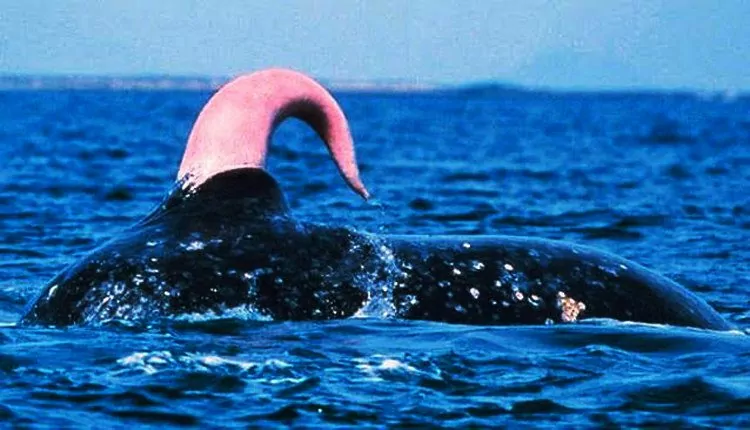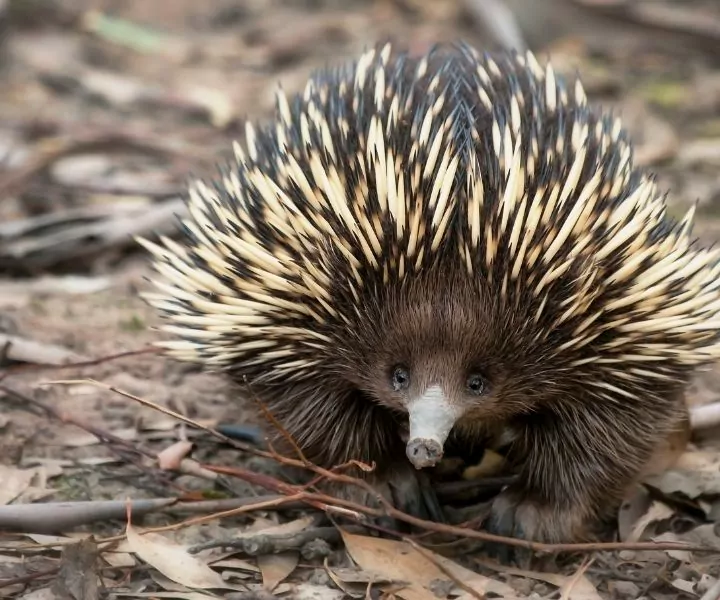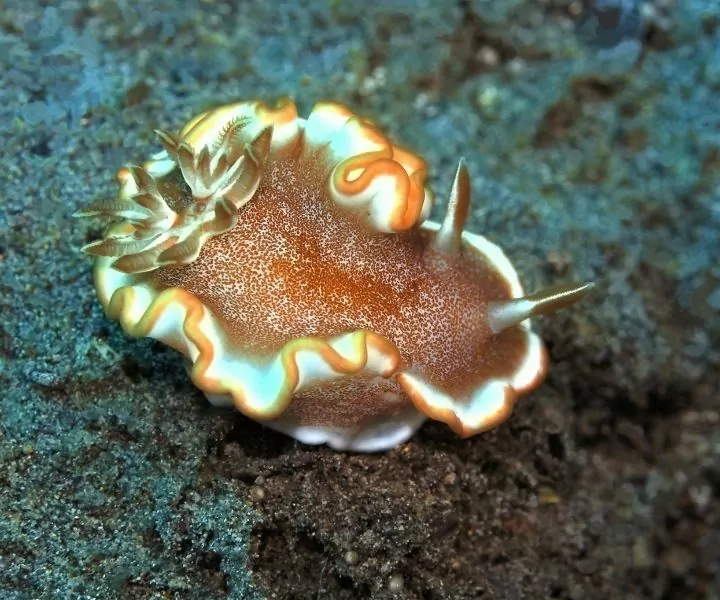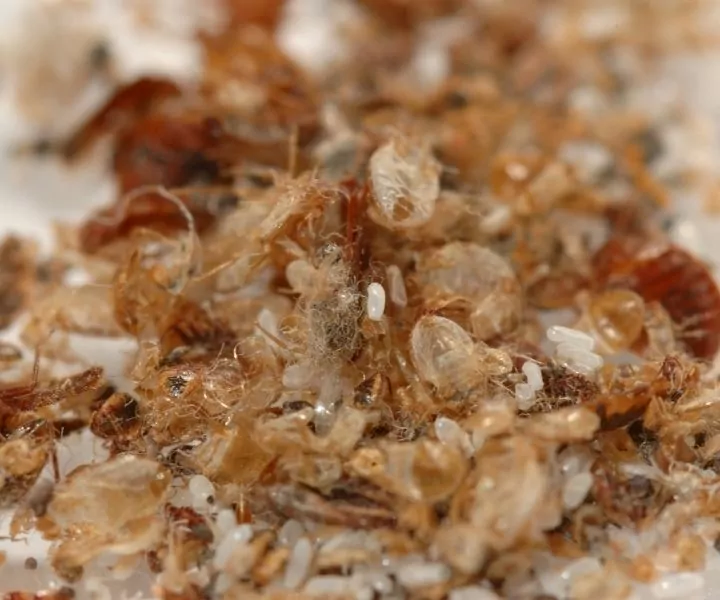The Fascinating World of The Blue Whale Penis
The biodiversity on this planet grants us with many wide-eyed wonders, including the wide range of whale penises and others in existence. Big ones (the Blue Whale penis, anyone?), small ones, spiky ones, curly ones…there is no shortage of variability when it comes to this particular appendage, as you will soon find out.

But let’s talk for a moment about animal penises in general. They are a rapidly evolving structure so that even between closely related species, they can differ magnificently. It is believed that the human once had small penile spines: barb-like structures that feature many animals’ genitalia we see today.
The loss of penile spines and the evolution into smooth penises may have resulted from our mating patterns and an increase in monogamous relationships, paving the path for increased complexity in our social structures. The science of evolution is miraculous, isn’t it?
We can see, from this, just how the organ can vary over time in one species, let alone over hundreds of thousands of species. From sizes, shapes, quantity, function; from spirals to forks to penises used like swords…there is no such thing as two penises being precisely the same.
The Blue Whale Penis and Eight Other Bizzare Male Genitalia
Blue Whales
Blue Whales are commonly compared to the size of a basketball court, reaching lengths of up to 95 feet (29m). Proportionally, they also boast the largest animal phallus, ranging from eight to ten feet (2.5-3m), with a one-foot diameter. Not only this, but each testicle can weigh up to one hundred and fifty pounds, and gallons of sperm are ejaculated at once.
The phallus is usually contained within the genital slit on the whale’s underside, protruding only when use is required. Isn’t the Blue Whale penis just something?
Their penis is also very agile, with two muscles attached to the pelvis giving it a good range of motion and allowing it to alter its shape depending on the anatomy of the female.
Did you know that the whale penis’ name is a dork? It is also the largest animal penis in the kingdom!
Echidna
The Echidna, an already strange animal that lays eggs like fish and birds but produces milk like other mammals. Echidnas have a four-headed penis because apparently, just one isn’t enough. Even more strangely, only two of these heads are used simultaneously, with the other half of their penis shutting down. Very economically, they can alternate which half they use.

The females have a two-branched reproductive tract, so the two heads of the penis fit perfectly. And like the rest of its spiky coat, the penis has sharp penile spines, which are said to function as an ovulation trigger or increase the success rates of fertilization.
When not erect, the penis sits within its body, emerging from a preputial sac when use is required. Unlike other mammals, the Echidna only uses their penis for mating. For urination, defecation, and in females, egg-laying, they have a separate all-in-one opening called the cloaca.
Dolphins
Dolphins have a fibro-elastic prehensile penis that is remarkably dextrous, able to swivel and grope to find its target, and come in a variety of different shapes and sizes. This is likely so that they can navigate the labyrinth of the female’s reproductive system, which has extensive vaginal folds.
With the oceans being vast and wide, a lot is unknown about the cetacean mating behavior. However, we do know that when it comes to mating time, dolphin males travel in pods of two to four to ward off competitors.
These dolphins surround the female and take their turn, seemingly giving her little choice in who impregnates her. However, it has been discovered that these vaginal folds outside their vagina allow them to block penetration, allowing the female some choice in the reproductive process.
Barnacles
While the Blue Whale takes the top spot for the largest penis in the world, the barnacle impressively has the largest penis to body size ratio. Barnacle genitalia are eight times their body length!
Barnacles are hermaphrodites, meaning they have both male and female sex organs, and because they are stationary, their very long appendages come in useful, reaching to blindly deposit sperm to nearby crustaceans. Interestingly, their penises are environmentally influenced: calm waters produce long slender penises, and rough waters short and stout penises.
Sea Slugs
A species of the sea slug, called the Cromodoris reticulata, have a spined single-use penis that they shed after use. Luckily, they have two more disposable penis segments hidden, which they can use after 24 hours. At one time, they only extend 1cm of their penis, which in total, is 3cm long.

It is not clear if once the internal penis has been used, it will then regenerate or if the male part of the sea slug’s sex life is over. They are simultaneous hermaphrodites meaning that both partners give and receive sperm during mating.
The penile spines are speculated to be a result of the requirement of removing a rival male’s sperm, which may account for discarding their penis like a used syringe.
Leopard Slugs
The well endowed Leopard Slug has two penises that are not to be missed, being a vibrant electric blue, and are the size of the slug themselves. They are hermaphrodites, and when mating, they valiantly dangle from the branches with their own slime, inseminating each other. However, it doesn’t end there…once mating has completed, one ingests the slimy rope as a reward for their efforts.
Eyeless Cave Insect
The Eyeless Cave Insect, tucked in the caves of Eastern Brazil, is perhaps the most curious of them all. With reversed sex organs, the female possesses a spiny penis-like organ that penetrates the male’s pouch-like vagina.
They spend approximately 40-70 hours mating, with the female’s penis tightly anchored to the male’s vagina so that the female can receive the semen. If the male attempts to break away, their abdomen is violently ripped open. Not the most peaceful ending, is it?
Bed Bugs
Bed bugs are not only notorious for being a great nuisance to a human’s quality of sleep, but they are also famous for violent stabbing sex, which can sometimes result in the death of the female in the process.
Read this article about animals that have sex for pleasure!

This ‘traumatic insemination’ is aptly named. Many female bed bugs no longer have a genital opening, simply because the males will stab through the outer body cavity, depositing sperm into her hemolymph, where the sperm will then migrate their way to the ovaries.
Flatworms
Flatworms not only use their penises for mating, but they seem to come in useful for a bit of fighting, called ‘Flatworm Penis Fencing.’ In some species, their two-headed penises are used like swords, and the winner gets the prize of piercing the other flatworm’s flesh for insemination. These battles can last up to an hour.
Flatworms are also hermaphrodites. The flatworm that does the stabbing becomes the father, and you guessed it, the recipient of the stab is the mother.
Other Weird…But Notable Animal Penises
Argentinian Lake Duck
While most male birds don’t have penises, the Argentinian Lake Duck is equipped with a 17-inch corkscrew-shaped penis, matching the female’s corkscrew-shaped vagina. This is proportionally the longest penis of all vertebrates and evolved possibly because the females can be observed flying away from their mate, making forced mating easier.
Snakes
Both snakes and lizards have two penises, called the hemipenes, which are said to be useful in mating competitions. Snakes form aggregations of five to one hundred males competing for a single female, so having two penises allows access from either side of the female, giving them a higher chance of being successful.
Sea Turtles
The sea turtle is incredibly well-endowed, extending to nearly half of the animal’s eight-foot body length. Sea Turtles have a five-lobed head that discharges semen from four branches. It is thought that their endowment has evolved so that they can inseminate females over larger distances.
River fish
In Vietnam’s Mekong Delta waters, a fish with a penis protruding out of its head has been located. It shoots just out from under the fish’s throat, allowing them to grab onto the female with its mouth while simultaneously fertilizing her eggs. This penis also includes a rod and a hook which is used to help latch onto the female.
Orb spider
The orb spider has a detachable penis that is inserted into the female for impregnation. Not only does this give them a better chance of winning in a competition with other males, but it also allows the male to escape the hungry female, who 75% of the time will eat the male as a post-coital snack.
Argonaut octopus
Nobody wants their penis to be called a ‘detachable worm,’ but this is, in fact, just what the argonaut octopus has. A tentacle-like structure detaches from the male’s body and squirms its way over to the female to deliver semen to her eggs, puzzling the Italian scientists in the 1800s who first discovered it, thinking it was some new kind of parasitic worm that hadn’t yet been discovered.
Facts About Animal’s Sex Lives You Probably DIDN’T Want to Know
Alligators Have Permanent Erections
It is a truth universally acknowledged that a penis will change in size or shape preceding the act of mating. However, this is not so for the alligator. Instead, thanks to the layers of stiff protein collagen, they are endowed with permanently ‘erect’ penises. These lurk within their cloaca, shooting out and retracting back like a rubber band.
Male Porcupines Urinate on the Female Before Sex
Unfortunately for the female porcupine, the male’s urine stimulates her to go into oestrus. In an annual event, the male porcupines will cluster around the females, battling one another for the prize to mate. The winner will then urinate on the female, who will fold back her quills so that she kindly doesn’t hurt her partner, and within seconds, the insemination process is complete.
Kangaroos Have Three Vaginas
Female kangaroos have one vaginal opening but three vaginal tubes. Male sperm travels up one or both of the side tubes, and a joey descends down the central tube about 30 days later, where it completes its gestation in the mother’s pouch.
No thanks! Female Chickens Can Eject Unwanted Sperm
Hens are able to discharge 80% of unwanted sperm, which comes in useful for their reproductive choices. Hens tend to be smaller than roosters and are unable to resist insistent males. However, their ability to eject the semen allows them some control over who inseminates their egg, rejecting the sperm of those lower in the pecking order.
The Antechinus Mate Until Fatal Exhaustion
A tiny mouse-like marsupial of Australia copulates with females for up to twelve hours straight, which can rather, unfortunately, strip their bodies of vital sources of energy. After copulation, it isn’t uncommon for the exhausted males to drop dead. Females usually only carry one litter in their lifetime, usually dying within the year after nurturing their young.
Where Did It Go? Male Honey Bees Lose Their Penis
It is an unfortunate outcome of the queen stepping up to the throne, but Mother Nature offers no sympathy. When the male bee (the drone) mates with the female, his penis (endophallus) is ripped off while inserted in the female.
He then flies off to die, his abdomen having been ripped open after the endophallus was removed. Even if the drone survives the mating, he is banished from the nest, as he has fulfilled the sole purpose of his life.
Do You Want to Know More?
Why not check out these books below on the fascinating world of animal penises and what more we can learn from them.
- Amazon Kindle Edition
- Meadows, William (Author)
- English (Publication Language)
- 112 Pages – 07/14/2019 (Publication Date)
- Amazon Kindle Edition
- Willingham Ph.D., Emily Jane (Author)
- English (Publication Language)
- 336 Pages – 09/22/2020 (Publication Date) – Avery (Publisher)
How’s It Hanging?
From the sizeable blue whale penis , the four-headed penis of the Echidna, the detachable worm of the Argonaut octopus, and the corkscrew penis of the Argentinian Lake Duck, there is no shortage of curiosities when it comes to the genitalia and reproductive habits of life on this planet.
And who knows what the state of the blue whale penis will be in centuries to come? As environmental and social factors continue to shift, we may find that evolution continues to tinker and tamper…only time will tell.


